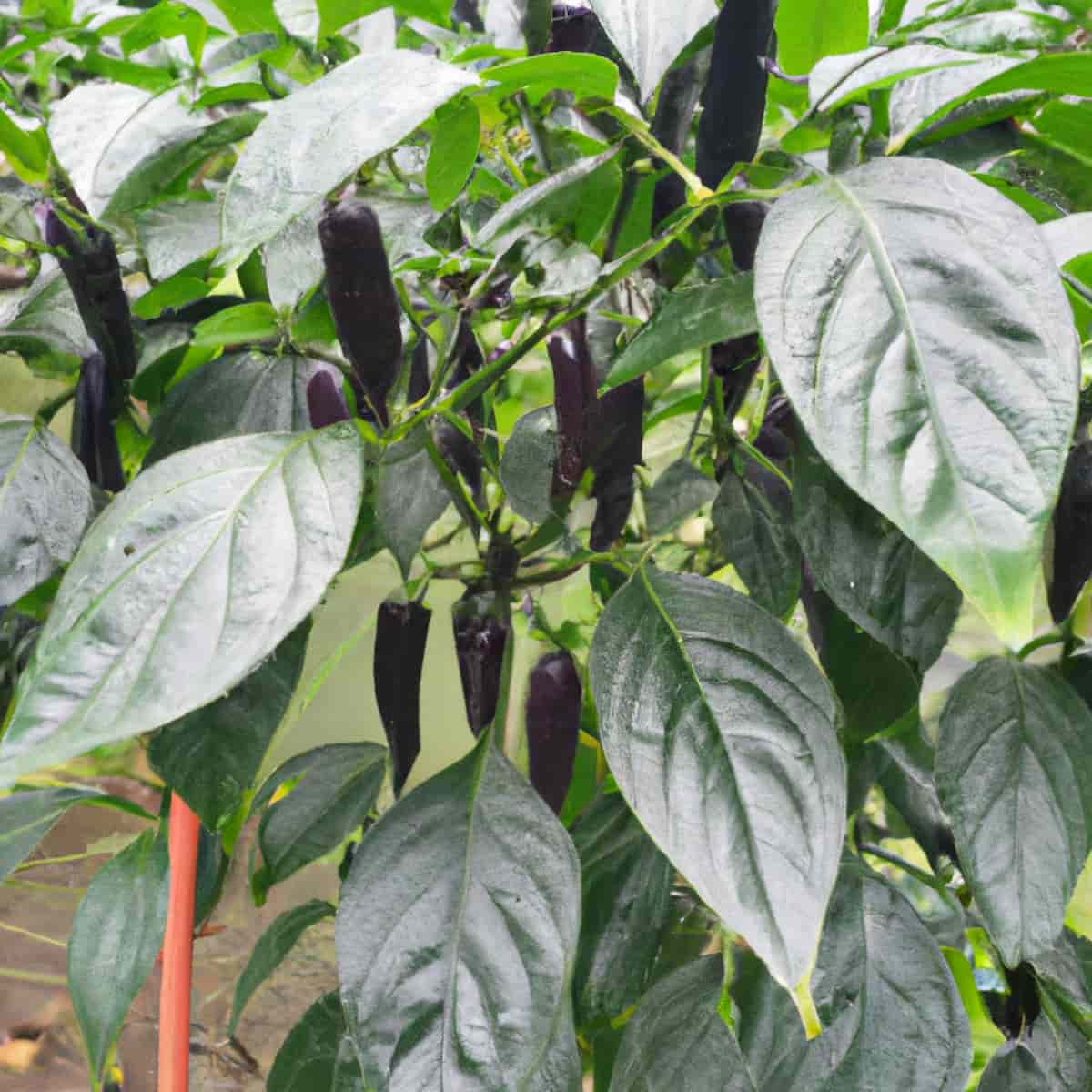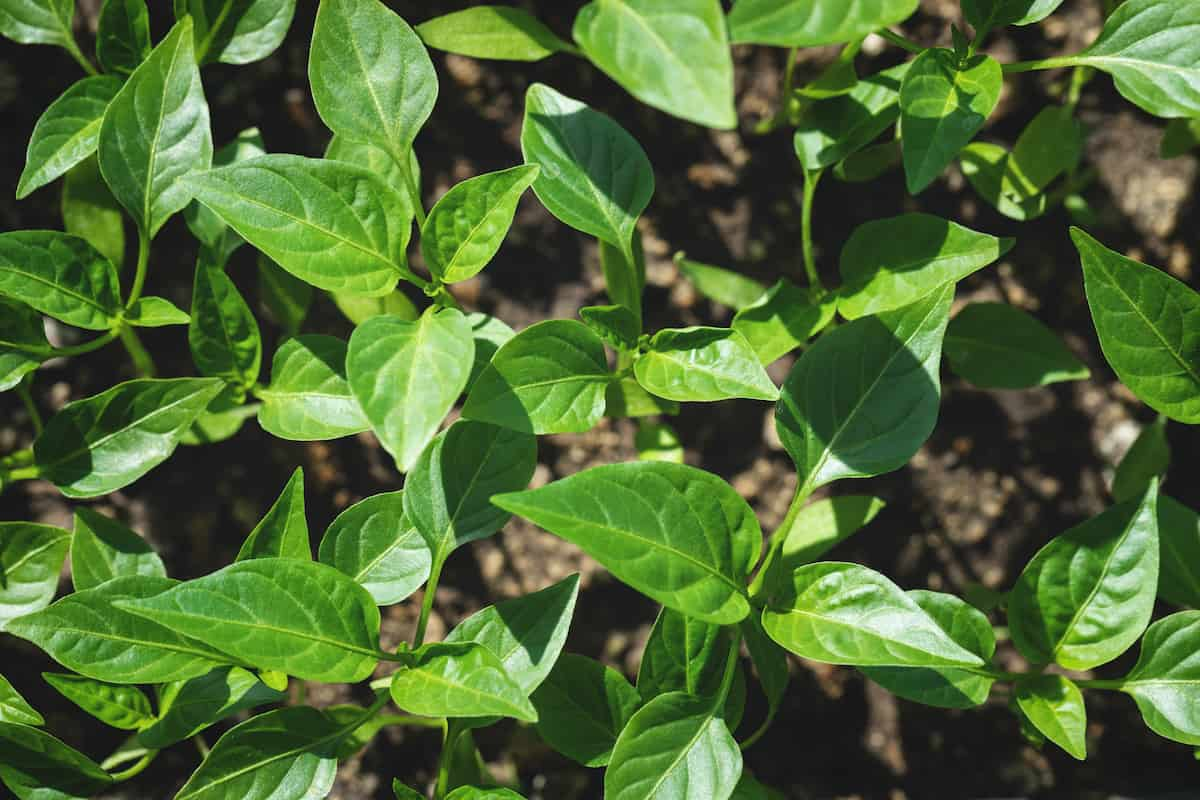The Vietnamese Devil Pepper is a hot and rare pepper variety from Vietnam with a heat level ranging from 60,000 to 100,000 Scoville units. It grows up to 2 feet tall and produces cone-shaped peppers that turn bright red when ripe. The package contains ten fresh seeds with a 90% germination rate. It is sought after by chili enthusiasts for its unique flavor and spiciness, making it perfect for adding a kick to any dish.

How to Grow Vietnamese Devil Peppers from Seed
Land/ Field Preparation and Soil Requirements for Vietnamese Devil Pepper
The Vietnamese Devil Pepper is a pepper variety that thrives in areas with a well-distributed annual rainfall of 125-200 cm. It can grow in various soil types, such as clay loam, red loam, sandy loam, and lateritic soils, with a pH range of 4.5 to 6.0. However, it grows best in its natural habitat on virgin soil rich in organic matter.
Temperature, Climatic, and Rainfall Requirements for Vietnamese Devil Pepper
To grow, Vietnamese Devil Pepper needs heavy rainfall, high humidity, and warm temperatures. It grows best on virgin soils rich in humus content, and planting should be delayed until the danger of frost has passed in the spring. The plant requires a well-distributed annual rainfall and prefers warm temperatures during growth. Providing the ideal growing conditions is crucial for a healthy crop.
Propagation Method and Seed Quality for Vietnamese Devil Pepper
Propagation Method for Vietnamese Devil Pepper:
- Fill a cup with fresh water
- Identify a young branch and make a clean cut at the base
- Remove flowers, fruits, and some leaves
- Submerge the cut end of the branch in the water-filled cup
- Keep the cutting in indirect light
- Watch for new roots developing from the submerged node
- Replace water as necessary
Seed Quality for Vietnamese Devil Pepper:
- Select seeds from healthy, mature plants
- Look for plump, firm, and uniform seeds
- Avoid discolored, cracked, or damaged seeds
- Perform a germination test
- Place seeds on a damp paper towel in a warm, dark place
- Watch for sprouts to determine good seed quality
Seed Treatment for Vietnamese Devil Pepper
Different solutions were used for imbibing Vietnamese Devil Pepper seeds, including chitosan solutions with concentrations of 0.01%, 0.05%, 0.1%, 0.3%, 0.5%, 1% acetic acid, and 1% Benomyl fungicide. The dry-untreated seeds were also compared with those hydro primed in distilled water. The purpose of the study was likely to determine which imbibing solution resulted in the highest germination rates or to investigate any potential effects of the different treatments on seedling growth and health.
Seed Rate and Spacing for Vietnamese Devil Pepper
For Vietnamese Devil pepper, the recommended seed rate is about 600-800 grams per hectare. The spacing for planting depends on the type of trellis system used, but a common practice is to plant at a spacing of 2 m x 3 m. This would accommodate around 1667 to 2222 plants per hectare.
Sowing Method for Vietnamese Devil Pepper
For Vietnamese Devil pepper, sow the seeds in a nursery at a depth of 1-2 cm after soaking them in water. Keep the seedbed moist and covered with mulch, and place it in a warm, sunny area. Transplant the seedlings to the main field after growing to 10-15 cm. The recommended spacing for transplanting is 2mx3m.
In case you missed it: How to Start Chili Pepper Farming in Florida: A Step-by-Step Growing Guide

Crop Rotation and Intercropping in Vietnamese Devil Pepper
Crop rotation and intercropping are important practices for Vietnamese Devil pepper farming. Legumes like beans or peas should be planted in the first year to enrich the soil with nitrogen. In the second year, peppers, tomatoes, eggplants, or potatoes can be planted to benefit from the enriched soil. Intercropping with nitrogen-fixing legumes like cowpeas or mung beans can also help improve soil fertility and increase income.
Manure & Fertilizer Applications in Vietnamese Devil Pepper
The best fertilizer for Vietnamese Devil pepper farming is Pepper & Herb Fertilizer 11-11-40 Plus Micro Nutrients. Under highly acidic soil conditions, apply lime or dolomite every alternate year. Organic manures in cattle manure or compost can be given at 10 kg per vine during May, while neem cake can be applied at 1 kg per vine.
Weed Management and Herbicide Application in Vietnamese Devil Pepper
For weed management in Vietnamese Devil pepper farming, herbicides containing selective preemergence active ingredients such as Trifluralin and Benefin can control most annual weeds. Additionally, herbicides containing selective preemergence active ingredient Dithiopyr can control crabgrass, annual bluegrass, oxalis, spurge, and other weeds. Postemergence herbicides containing Dicamba can be used for broadleaf weed control.
Water Management in Vietnamese Devil Pepper
To efficiently manage water in Vietnamese Devil pepper farming, irrigate vines through a hose, with mature vines needing 50 liters per vine and younger ones needing less. Total water requirements range from 600-900mm to 1250mm for long periods. The crop coefficient (kc) begins at 0.4.
Disease Control in Vietnamese Devil Pepper
To control diseases in Vietnamese Devil pepper farming, it is recommended to use a copper-based fungicide as a foliar spray during the early morning or late evening. Wetting the leaves during watering should be avoided, as this provides the necessary moisture for spores to multiply and spread on the leaves. Watering should be done in the base of the plant to prevent splashing water onto the leaves.
Pest Control in Vietnamese Devil Pepper
Effective pest control measures are essential for Vietnamese Devil pepper farming. Pheromone traps and searching for adults during morning hours can help control pepper weevils. Since only the adult weevils can be controlled with insecticides, it is recommended to remove and destroy any infected or damaged fruit, avoid planting nearby, and deep-plow crops right after harvest.
Harvesting and Threshing of Vietnamese Devil Pepper
Vietnamese Devil pepper spikes should be picked by hand when one or two of the berries on the spike start to turn orange, and the berries are hard to touch. After Harvesting, the spikes are threshed to separate the berries from the stem, which can be done manually or using a machine.
Vietnamese Devil Pepper Yield per Acre
Based on the information provided, the yield of Vietnamese Devil pepper can be estimated to be around 2 to 3 kg of berries per year. Assuming a planting density of 1110 per hectare, the estimated yield per hectare can be around 2220 to 3330 kgs.
In case you missed it: How to Grow Poblano Peppers from Seed in Containers: A Guide to Planting to Harvest

Conclusion
It can be concluded that Vietnamese Devil pepper cultivation requires proper crop management practices such as crop rotation, intercropping, use of fertilizers and manures, weed and pest management, and adequate water management. The plant yields 2 to 3 kg of berries annually, or 275 kg per hectare in India. Harvesting of the pepper spikes should be done at the right time when one or two of the berries on the spike start to turn orange and the berries hard to touch.
- Feed Your Flock for Less: Top 10 Tips to Save on Chicken Feed
- Ultimate Guide to Ossabaw Island Hog: Breeding, Raising, Diet, and Care
- Hatching Answers: The Top 10 Reasons Your Chickens Aren’t Laying Eggs
- Eggs and Economics: Breaking Down the Cost of Raising Backyard Chickens
- Defend Your Greens: Proven Methods to Keep Iguanas Out of Your Garden
- Ultimate Guide to Cinnamon Queen Chicken: A Comprehensive Guide for Beginners
- Ultimate Guide to California Tan Chicken: Breeding, Raising, Diet, Egg-Production and Care
- Ultimate Guide to Marsh Daisy Chicken: Breeding, Raising, Diet, and Care
- 10 Types of Chicken Farming Businesses You Can Start for Profits